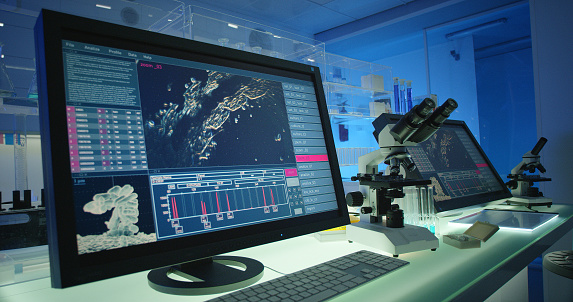 I’ve talked through a couple ways that data is helping fight COVID-19, from detecting and tracking an outbreak, to detecting within people. In this blog, I’ll be focused on research and elimination. While the world sets its sights on a hopeful slowdown similar to what is experienced with a seasonal flu, a true vaccination or cure is the ultimate goal. With more and more researchers throwing their collective hats in the ring, data sharing and collaboration is becoming key. What new information is available on the virus makeup? How is it evolving/mutating? Where are we making progress on vaccination development? What approaches have a higher likelihood of success? How can progress be shared across the globe to spur new ideas or rapid insight? All of these questions tie back to data, and using data science and AI to help answer them is rapidly becoming a go-to approach.
I’ve talked through a couple ways that data is helping fight COVID-19, from detecting and tracking an outbreak, to detecting within people. In this blog, I’ll be focused on research and elimination. While the world sets its sights on a hopeful slowdown similar to what is experienced with a seasonal flu, a true vaccination or cure is the ultimate goal. With more and more researchers throwing their collective hats in the ring, data sharing and collaboration is becoming key. What new information is available on the virus makeup? How is it evolving/mutating? Where are we making progress on vaccination development? What approaches have a higher likelihood of success? How can progress be shared across the globe to spur new ideas or rapid insight? All of these questions tie back to data, and using data science and AI to help answer them is rapidly becoming a go-to approach.
Research and Elimination
Using AI for scientific discovery is not uncommon. Sifting through research, testing possibilities, and predicting outcomes based on meticulous data sets is a prime AI use case. And for COVID-19, these approaches are being used daily to work on the creation of a vaccine. AI can sift through mountains of documented research and findings to arm researchers with relevant information. AI can identify ideal vaccine components based on virus structure. And to date we’re rapidly approaching 100 potential vaccine candidates for COVID-19 (though many are at the early stages of development), giving hope to the idea of getting back to “normal.”
While early on, limited data and research availability hindered the COVID-19 research process, with each passing day comes more and more research data that must be reviewed, augmented with existing research, and in some cases scrutinized depending on the entity sharing the research. As trusted research and data becomes openly available, getting it in the hands of not just the research community, but the masses is critical. In a time of urgency, there should not be limitations to who can discover a breakthrough. A great example of this can be seen by Kaggle, the world’s largest data science community that provides open data sets, sandbox environments, and host-sponsored data science competitions. For COVID-19, there are multiple challenges focused on better understanding the virus, including forecasting transmission rates based on cases/deaths, supporting frontline workers with exploratory research, curating COVID-19 specific data sets, and using NLP to answer questions based on scientific literature research. Whether for an expert or a student, this is a call to data science arms across the world.
Some additional great examples of using AI to help from a research standpoint can be seen from Google DeepMind, the National Institute of Health (NIH), and university researchers across the globe. A short time after its release in the beginning of this year, Google DeepMind’s AlphaFold was sicked on SARS-CoV-2, the virus causing COVID-19. This led to protein structure predictions of the virus that were then shared with the research community. Computer models were leveraged by the NIH, University of Texas in Austin, and University of Washington to develop 3D atomic scale maps to better understand how the virus attaches to human cells.
Data has, is, and will continue to push us forward in the fight against COVID-19, from ongoing outbreak tracking and detection, to virus detection, to research with a goal of eradication. And one of the outcomes, once we as a planet are passed this, is the level with which we’ll be prepared for the next outbreak, next pandemic, or next global challenge where data will fuel our fight.
Read the first two blogs in this series:






